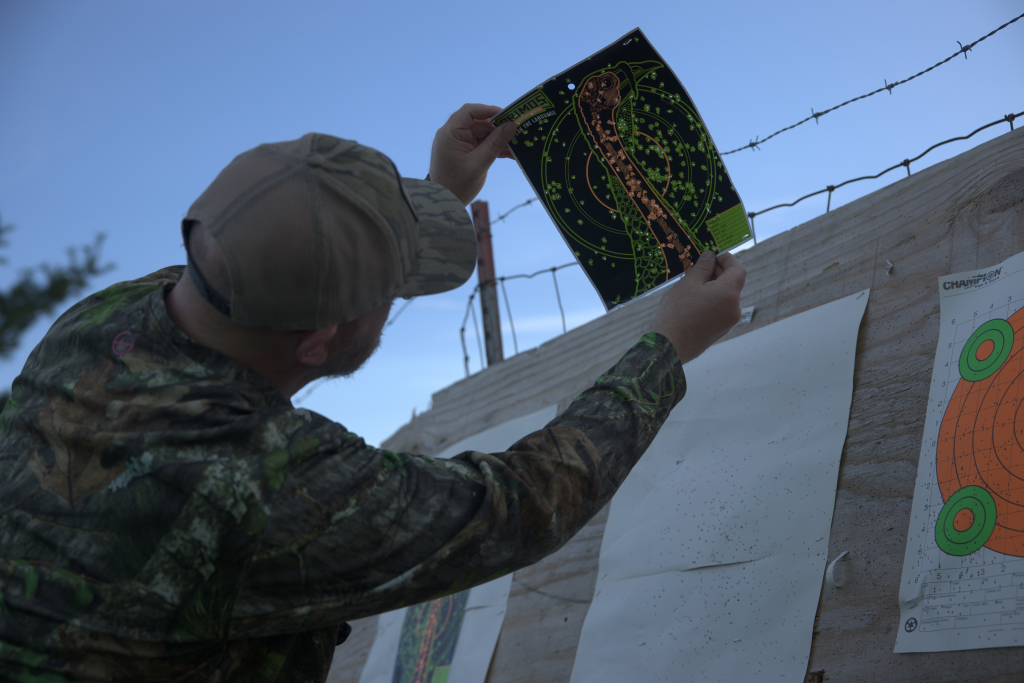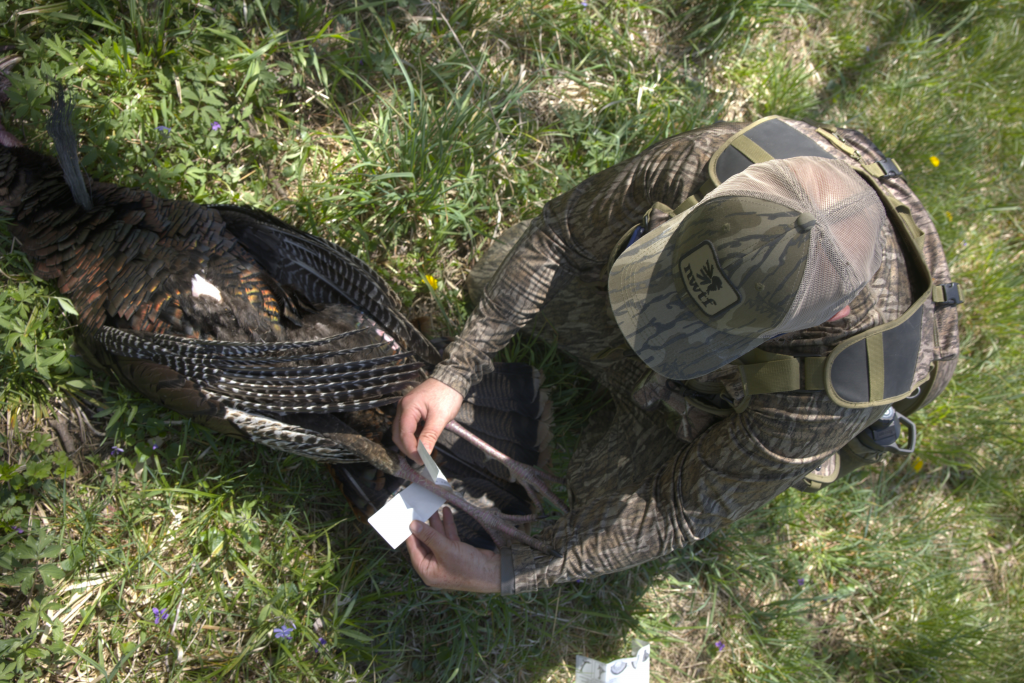Don’t Dismiss Two and Three Quarters
Turkey loads sized 2¾ inches naturally deliver lower recoil, resulting in more comfortable shooting. And, those lighter options can still fill tags, especially when packing TSS.
Did you know that major ammo manufacturers such as Federal and Remington still offer 2 3/4-inch 12-gauge turkey loads? Federal offers Grand Slam in No. 5 lead shot, and Remington has its Nitro Turkey in No. 4 or 5 lead. And why wouldn’t they? These companies have been making 12-gauge 2 3/4-inch loads for more than a century, and in that time, 2 3/4-inch shotshells surely killed boatloads of turkeys every year.
Given that 2 3/4-inch 12-gauge turkey loads are still on store shelves, enough turkey hunters must still buy them. That is surprising because 3- and 3 1/2-inch loads are far more mainstream, and their popularity started more than six decades.
In 1957, Federal introduced its first 3-inch “super magnum” shotshell. This longer hull allowed for a greater payload. By 1990, Federal Ammunition, in collaboration with Mossberg, introduced 12-gauge, 3 1/2-inch magnum loads, giving hunters an even larger shell.
Those longer hulled shotshells provided more room for more pellets. For example, Federal’s Grand Slam 12-gauge, 2 3/4-inch, No. 5, 1 1/2-ounce load carries an average of 255 pellets; whereas; Grand Slam’s 3-inch, No. 5, 1 3/4-ounce load has 298 (43 pellets more). Moreover, its 3 1/2-inch, No. 5, 2-ounce load touts an average of 340 (85 more).
Given those significant increases in pellet counts, it’s understandable why larger loads have become the norm. A mightier number of pellets is undoubtedly helpful in knocking down tough turkeys, especially at longer ranges. This increases the odds of successfully connecting with a gobbler because it means a higher chance of a hit downrange.
But, that advantage can also be a disadvantage. Due to the heavier quantities of gunpowder and shot, the hard-hitting performance of 3- and 3 1/2-inch loads deliver heavier amounts of punishing and uncomfortable recoil.
Without going deeply into all the science and math, the principle of recoil can be summed by saying: Depending on the shotgun weight and type, a turkey load with a heavier quantity of shot and powder weight and/or faster muzzle velocity will have more kinetic energy and, therefore, more felt recoil, compared to a lesser load.
Now, calculating and evaluating recoil is much more complicated than that. However, the increased recoil principle due to shooting heavier loads is generally accurate, and it is certainly enough to use as a rough gauge (no pun intended) of how severely your shotgun will kick.
Punishing recoil of 3- and 3 1/2-inch loads is likely why sub-gauges, such as 20- and 28-gauge or .410 bore and lighter 12-gauge loads that use TSS pellets, are becoming increasingly popular among turkey hunters.
The lighter 12-gauge TSS loads, I just referred to are Federal’s Custom Shop TSS 12-gauge, 2 3/4-inch, 1 1/2-ounce, 1,050-fps load in No. 7, 8, 9 or 10, released in 2019, and HEVI-Shot’s HEVI-18 TSS Reduced Recoil 12-gauge, 2 3/4-inch, 1 1/4-ounce, 1090-fps load in No. 9, released in 2023.
TSS started mainstreaming in 2018, when Federal Ammunition introduced Heavyweight TSS (Tungsten Super Shot) turkey loads. TSS is the world’s densest (18g/cc) tungsten-alloy shot. Ultra-dense TSS pellets allow ultra-small pellet sizes that still carry their penetration energy at longer distances, upping pellet counts and increasing killing range.
Today, TSS turkey loads are everywhere and are offered by every major ammo manufacturer. However, the true beauty of TSS is its ability to enable loads to feature ultra-small pellet sizes that still carry their penetration energy at longer distances. Instead of a traditional turkey load using lead shot in shot sizes No. 4, 5, or 6, TSS loads can be in tiny shot sizes No. 7, 8, 9, or even 10.
Smaller pellet sizes greatly increase pellet counts, opening the door for sub-gauges and lighter 12-gauge 2 3/4-inch loads — naturally limited to smaller payload weights — to become popular and trend big time in the turkey hunting world.

Think about it: If 3- and 3 1/2-inch loads with lead pellet counts of 298 and 340 have been killing turkeys for many decades before the invention of TSS, then a TSS pellet count of even greater quantity would be more than sufficient today. And the lighter 12-gauge, 2 3/4-inch TSS loads are certainly up for the task.

Federal’s Custom Shop 2 3/4-inch No. 9s, with a 1 1/2-ounce load, have an average pellet count of 544, and HEVI-Shot Reduced Recoil 2 3/4-inch No. 9s, with a 1 1/4-ounce load, tout 476. These counts are certainly superior to 3- and 3 1/2-inch lead loads and certainly produce deadly patterns beyond 45 yards.
It’s important to note that TSS pellets also don’t require blistering speeds to produce ideal and deadly patterns. The lighter 12-gauge 2 3/4-inch TSS loads mentioned above have a softer muzzle velocity of 1,050 or 1,090 feet per second. For comparison, a muzzle velocity of 1,200 or 1,260 is found in typical 3- and 3 1/2-inch lead loads. That significant difference of lesser velocity helps make them more comfortable as well.
So, as this article’s title states, don’t dismiss 12-gauge, 2 3/4-inch turkey loads. Those packing TSS are an excellent option for modern turkey hunters who want to hunt with a turkey load that feels more like a sub-gauge. And with the power of TSS, you will still achieve excellent patterns at extended ranges.
Yes, 12-gauge, 2 3/4-inch TSS turkey loads are niche, so they are harder to find on store shelves. However, with some ahead-of-time planning, you can buy direct from Federal or HEVI-Shot online at www.federalpremium.com and www.hevishot.com and have them delivered to your door.
